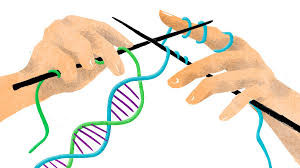Eduardo Kac: Line-editing the book of life

Bio-poetics is a genre verging on a discipline that enlists laboratory techniques to achieve its creative ends. The metaphor of subject “matter” is literalized: spores and viruses are a “robust media” according to Joe Davis,while Roy Ascott refers to a new frontier of “moist realities” and “wetware.” “Wet paper” spun from a cylinder printing-press is a writer/reader barrier in Walt Whitman’s frustrated depiction, but wet media in bio-poetics is a source of continuum: the visceral matter viewed, manipulated, and written-on is made of the same substance as the writing, dissecting hand. “Humor” derives from the Latin umor (moisture) and indeed visceral wetness is a source of wit in much bio-poetic expression. The informing tension in bio-art is not only between the dryness of our genetic diagram and the irrepressible dampness of our bodies, but between the crystalline rationality of our genetic code and the irregular contours of our carbon-based anatomies. D.H. Lawrence once pronounced free verse as a “carbon” alternative to “crystalline” classical forms, as if unmetered verse were produced by mutations in some poetic protein: much of bio-art literally (if only semi-literarily) pursues such carbon-based expression.
In their more daring incarnations, both poetics and genetics resist and re-draw categorizations. In the hands of Pound and Eliot, the Modernist verse-collage (as a mode of lyric fission) leaps over and tunnels under genre divisions, cross-breeding Provencal song to Vedic chant and splicing vaudevillian refrains into classical hexameters. Bio-poetics flouts and confounds generic decrees as well, forming organic conundrums and inter-species riddles by leaping the “mutation firewall,” in Steve Tomasula’s phrase. Bio-poetics’ “stanza” is the osmotic cell, its “rhyme” is species resemblance, its “phrases” are composed on cell-lines and on petri dishes treated as pages.
Eduardo Kac’s Genesis project uses Morse code converted into DNA base-pairs to insert a phrase from the Book of Genesis into a microorganism: thymine is “dash” in Kac’s elected language, cytosine is “dot,” adenine is word-space and guanine is letter-space. Kac uses Morse code, a radiotelegraphic language invented during the Genesis of the Information Age,to comment on our notions of spontaneous origin and biological “scriptedness.” Kac is deliberately and conceptually walking a razor’s-precipice, converting the Book of Genesis’ ill-famed “dominion over nature” phrase into manipulated amino acids, and so embodying and commenting on a certain species hubris at once.
Similarly, Kac’s Move 36 is a sand chessboard featuring a plant grown from a “Cartesian gene” deploying the phrase Cogito ergo sum translated into genetic code. Cartesian grids have long been used to map protein topologies, but that process is now reversible as a Cartesian motto is itself transfused into an organismic phrase. “A poem is like an amino acid” in Michael McClure’s commentary, and proteins are indeed spelled out in chains of letters (our nucleotide language of A, C, T, and G) which only appearto stand for phonemes. In bio-poetics our stylized letters are returned to their service as pictograms, even as they function as amino triggers for the growth of new organisms. Emerson’s notion of language as “fossil poetry” has its own bio-poetic correlative here: in Kac’s Fossil Folds several protein sequences are permanently embedded in granite to comment on a “semantic tension” between Life as dynamic Flux and as preserved Writ.
Emerson’s claim that “every word was once an animal,” is also more complicated, as animals’ genetic “words” are blended into cross-species puns. Kac (pronounced “cats”) takes up the cross-breeding gauntlet in several of his projects and has been called a “genetic tattooist,” using inserted proteins to enhance an animal’s somatic profile. In one project, Kac joins the attributes of two animals, a rabbit and a jellyfish, into a patented life form. An albino rabbit is Kac’s page, whose germ line is able to receive the data of a fluorescent jellyfish protein and glow green like an open-source genetic “go” signal. Kac operates as if DNA’s sugar-ribose rungs could be rung like bells on an atonal genetic chime. A rabbit is a study in super-fertile reproductive success, and a jellyfish is an entity-as-colony, and so Kac’s coined organism is an interspecies pun on the teeming abundance of Nature. As well, this hybrid artwork is a portmanteau creature and a source of media scandal, raising (and defying) problematic questions concerning the appropriate limits of human intervention into the genetic sanctity and destiny of our fellow species.
A p.s. to Genesis: notes on transgenic/bio-poetic art